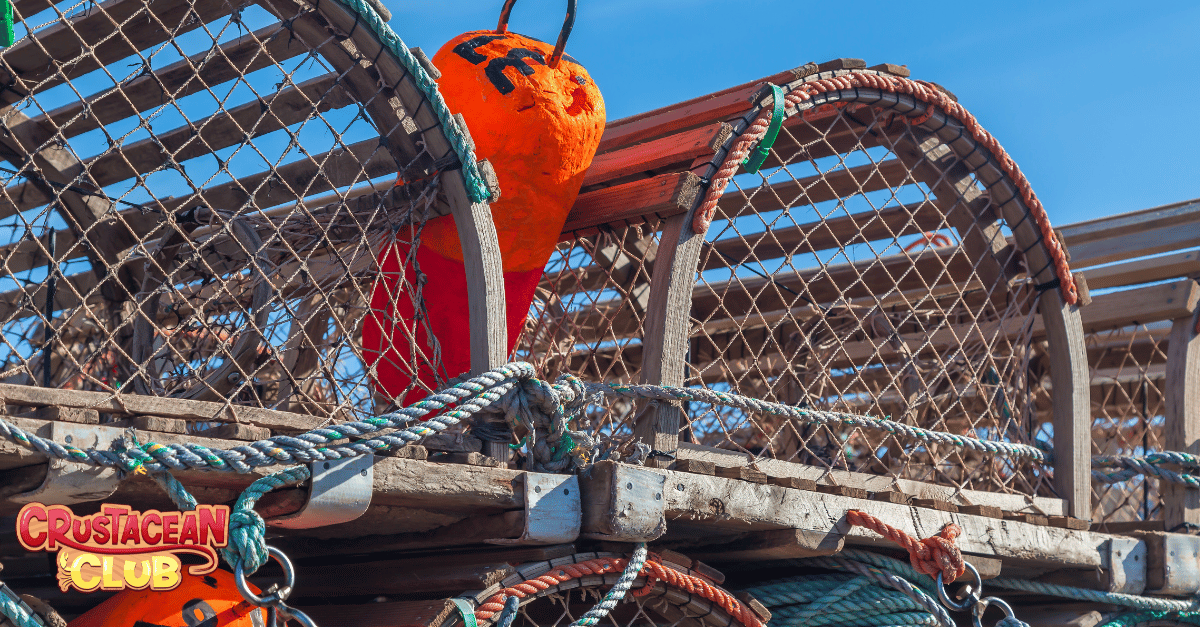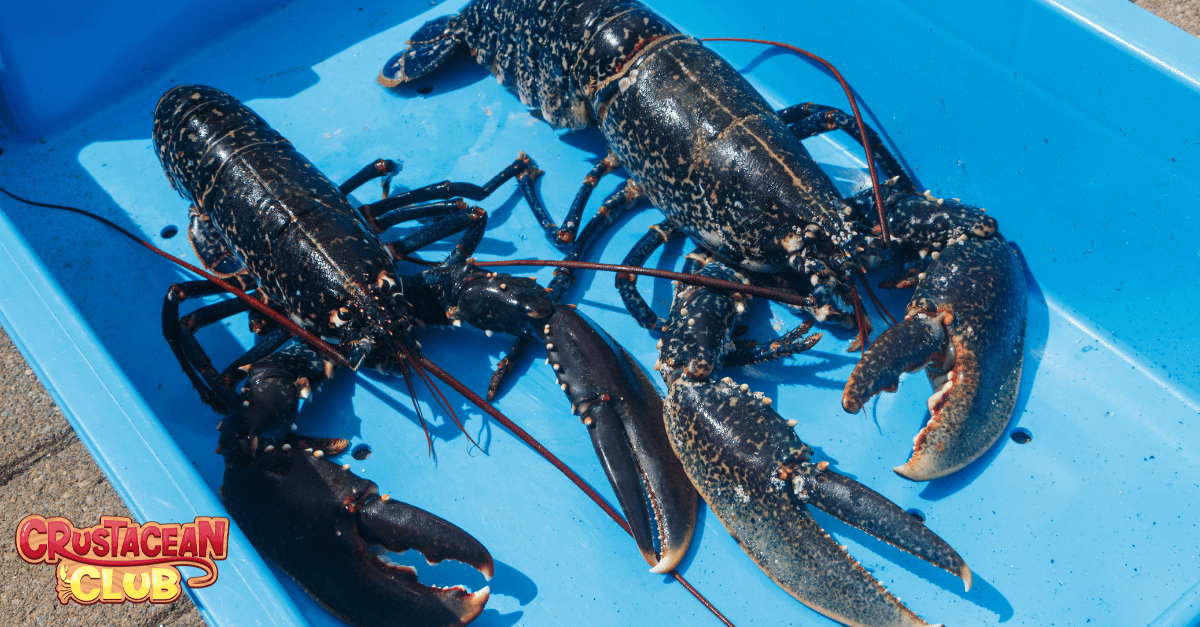Catching a lobster doesn’t have to be complicated. This no-nonsense guide on how to catch lobster helps you navigate the essentials: from obtaining the right gear and permits to understanding the legal size limits and the best tactics for luring these elusive crustaceans. Get ready to dive into the straightforward how-to that will bring lobsters from the ocean floor to your table.
Check out the Crustacean Club site for additional information on all things lobster, including expert guides on lobster catching!
Key Takeaways
- Know the law – get a saltwater fishing license and lobster permit, and familiarize yourself with local size and bag limits to ensure your lobster hunting is legal and sustainable.
- Gear up strategically – equip yourself with nets, tickle sticks, dive lights, and measure each catch with a lobster gauge, making sure you’re fully prepared for the underwater chase.
- Fish responsibly – respect the ecosystem by following sustainable practices, like correct gear usage and adhering to guidelines, ensuring lobster populations thrive for future generations. Learn where and where not to fish by visiting the Crustacean Club’s Hot Spot Locations list.
We love hearing from our readers and subscribers, so please feel free to reach out and contact us today!
Preparing for Lobster Pursuit
Before setting sail in pursuit of the famed spiny lobster, there’s some groundwork to lay. The thrill of lobster fishing begins with securing the right permits. Remember, the ocean is not just a playground; it’s a regulated environment where responsible enjoyment ensures sustainability for generations.
A recreational saltwater fishing license and a lobster permit are your tickets to the underwater treasure hunt in the Florida Keys. Make sure to apply for your lobster fishing license before diving into gear acquisition; getting ahead of the game will keep your focus on the catch, not the paperwork.
Gear Up: Selecting the Right Equipment
With your legalities squared away, it’s time to talk gear. The right equipment is your best ally in the sport season of lobster catching. At the core of your toolkit are tickle sticks, nets, and gloves – the holy trinity of lobster hunting. But don’t stop there; arm yourself with kevlar gloves for protection, a primary dive light for visibility, a tickle stick to coax your quarry out, a lobster gauge to ensure they’re keepers, and a bag to hold your bounty.
After all, selecting the correct gear is not just about effectiveness; it’s about respecting the game and the game’s rules.
Legal Know-How: Understanding Size and Bag Limits
Now, let’s talk legality. The ocean’s bounty is not limitless, and neither is your catch. Knowing the legal size limits for lobsters is not only crucial but mandatory. Imagine the disappointment of catching your first lobster only to find it doesn’t meet the local size criteria, such as undersized lobsters. In places like Maine, for instance, lobsters must have a carapace size of at least 3¼ inches but no more than 5 inches, and egg-bearing females are protected. Be mindful of local regulations, like the maximum number of lobsters you’re allowed to catch and trap limitations, to ensure your fishing tales are both memorable and lawful. Ignorance is not bliss here; it can result in citations on the water, so study up and fish right.
Spotting Your Prey: Where to Find Lobsters
Embarking on the quest to catch lobsters is akin to entering a vast underwater labyrinth in search of treasure. Spiny lobsters, the stars of our show, prefer the solid ground beneath their feet, making homes in coral reefs and sponge flats in the tropical and subtropical waters of the Florida Keys. In this adventure, you’ll have the opportunity to encounter all the lobsters in their natural habitat, guided by the subtle movements of their lobster antennae, as you experience the thrill of lobster shoots.
Here are some popular methods for catching lobsters in these parts:
- Being towed behind a boat, eyes peeled for lobster hideouts
- Diving with a snorkel and mask to spot lobsters hiding in crevices
- Using a lobster trap to lure and catch lobsters
Adrenaline surges as you drag along, the ocean’s current your only companion, and the possibility of a catch within arm’s reach. Snorkeling with a controlled approach is paramount; you’re not just swimming, you’re strategizing to prevent your prey from being spooked. And when you catch a glimpse of that spiny lobster, know that you’ve found the ocean’s version of a pot of gold.
Decoding Lobster Behavior
To catch a lobster, you have to think like a lobster. These creatures are the Houdinis of the sea, experts in the art of concealment. They hunker down around structures like:
- rock ledges
- coral heads
- thick vegetation
- any other form of cover the ocean floor provides
When snorkeling, embody calm. A relaxed diver can approach with control and hold their breath longer, traits that are beneficial when catching lobsters. And if you’re daring enough for night dives, your chances increase as lobsters become more active and visible despite the reduced visibility and navigation challenges of the dark waters.
Identifying Prime Lobster Real Estate
Where you find your lobsters depends on the stage of their life. Juvenile spiny lobsters seek the safety of protective nearshore areas, while adults prefer the vastness of offshore reefs. Think of it as lobster suburbia versus the downtown core; where you fish depends on the catch you’re after.
Whether you’re in it for the young ones or the full-grown, understanding where to find your lobsters is half the battle won.
The Catch: Effective Techniques for Snaring Lobsters
With your prey in sight, it’s time for the main event: the catch. The tickle stick is not just a tool; it’s your lobster fishing wand. Gently coax the lobster out of its hideaway, and when it’s in the open, that’s your moment. It’s a showdown between you and the lobster, and with a swift, firm hand-grab of its tail, you claim victory. But be quick; these critters are slippery, and hesitation is your enemy.
Day vs. Night Diving: Pros and Cons
Day or night, each dive offers a different adventure. Night diving is an opportunity to see:
- lobsters in their element; they’re nocturnal, after all
- lobsters emerging to forage under the cover of darkness, making them easier to spot and catch
- lobsters eating or marching in search of food, practically inviting you to scoop them up during your lobster diving experience
However, night diving during the mini season has its challenges. Your world shrinks to the cone of light from your dive light, demanding strong navigation skills and preparedness for the unexpected.
Avoiding Common Mistakes
Even seasoned lobster hunters can make mistakes. Here are some tips to help you improve your lobster hunting skills:
- Be decisive and swift to secure your catch. Hesitation is your adversary.
- When night diving, avoid waving lights excessively. This can alert and scare away lobsters you’re not ready to catch.
- Keep your light steady and your movements deliberate to avoid diminishing your chances.
By following these tips, you can increase your chances of a successful hunt lobsters and learn how to catch lobster effectively.
Handling Your Catch: Ensuring Lobster Welfare
Once you’ve caught your lobster, the responsibility doesn’t end. Measuring your catch correctly is part of the process. The carapace, measured from the rear of the eye socket along the middle of the back to the end of the body shell, must be greater than three inches. When handling a live lobster, pick it up by the shell just behind the head, steering clear of the claws and tail to reduce harm and stress.
Keep your lobsters cool immediately after the catch, at temperatures around 40 degrees Fahrenheit, to slow their metabolism and maintain their freshness. And remember:
- Live lobsters should not be stored in fresh or tap water
- Keep them moist with wet newspaper or seaweed
- Store them upright
- Maintain a temperature between 36 and 45 degrees Fahrenheit in the coldest part of a refrigerator.
Transporting Live Lobsters
When it’s time to bring your catch home, think of your lobster as a delicate passenger. Here are some tips to ensure their safe transport:
- Use insulated coolers to keep the environment cold without exposing lobsters to harmful fresh water or ice.
- Use wet newspaper or fresh seaweed as their seatbelt to maintain moisture.
- Secure their claws with bands to ensure they won’t injure themselves or their fellow travelers.
- If you’re shipping lobsters, use insulated kits with proper labeling and cushioning to protect them on their journey.
Respect the Ecosystem: Sustainable Lobster Fishing Ethics
Catching lobsters is an art that comes with an ethical responsibility to the ecosystem. In Maine, for example, lobstermen follow sustainable practices like bait regulations, biodegradable trap panels, and avoiding wet storage of gear to preserve the marine environment. These measures extend to using low-impact lobster traps and enforcing size limits on lobsters to enhance sustainability. Lobstermen work hand-in-hand with scientific and environmental organizations to adjust their fishing practices for the betterment of the environment.
With regulations like tail notching for breeding females, these fishermen show a commitment to the longevity of lobster populations that dates back to the 1800s. The lobster fishery has also adopted stricter environmental guidelines, such as removing miles of floating ground line to reduce gear entanglements, protecting the marine life even further. Beyond fishing practices, Maine lobster businesses show their dedication to environmental sustainability by embracing renewable energy usage.
Do’s and Don’ts When Lobster Fishing
When lobster fishing, some rules of thumb will ensure a safe and successful experience. Always maintain idle speed within 100 yards of a boat displaying a dive flag to comply with lobster fishing regulations. This isn’t just about following the rules; it’s about respecting fellow divers and the creatures below.
After the Dive: Post-Catch Procedures
The dive may be over, but the care for your catch is just beginning. Here are some tips to keep your lobsters fresh:
- Keep your lobsters refrigerated immediately after the dive, ideally at a temperature around 40 degrees Fahrenheit to keep them cold and reduce their movement.
- Remember to keep them moist with the wet newspaper or seaweed they were packed in to prevent them from drying out.
- Leave the rubber bands around their claws on until after cooking to prevent any unwanted pinches.
To enjoy the fruits of your labor during lobster season, it’s recommended to cook your lobsters on the same day they are caught for the freshest flavor.
Keeping Your Catch Fresh
The difference between a good lobster meal and a great one is the freshness of your catch. Store caught lobsters in a cool environment at around 40 degrees Fahrenheit to ease handling and make them less active. Wet newspaper or seaweed is not just packing material; it’s a lifeline that keeps your lobsters from drying out until you’re ready to cook them. When you are ready to cook your lobster, be sure to access our library of recipes to learn new ways to cook up your fresh catch!
Summary
From the anticipation of preparing for the lobster pursuit, through the excitement of spotting and catching your prey, to the satisfaction of handling and keeping your catch fresh, you’ve journeyed through the full spectrum of lobster fishing. By respecting both the craft and the ecosystem, you’ve not only indulged in a thrilling sport but also contributed to the sustainability of this cherished pastime. Now, with the sea’s bounty in hand and a wealth of knowledge, you’re ready to craft a seafood experience that’s as rewarding as it is delicious.
Learn more about us and the wealth of knowledge we have to offer here at Crustacean Club about all things, well, crustacean!
Frequently Asked Questions
What equipment do I need for lobster diving?
You’ll need tickle sticks, nets, gloves, a dive light, a lobster gauge, and a lobster bag to carry your catch when lobster diving. Happy diving!
How do I know if a lobster is of legal size to keep?
To determine if a lobster is of legal size to keep, simply measure its carapace from the rear of the eye socket along the middle of the back to the end of the body shell—it must be greater than three inches.
Can I catch lobsters at night?
Yes, you can catch lobsters at night because they are more active after dark, but night diving requires good navigation skills and preparedness for low-light situations. So, be cautious if you decide to go for it!
How should I transport live lobsters?
To transport live lobsters, use insulated coolers packed with wet materials like seawater-soaked newsprint or fresh seaweed, and secure their claws with bands. This will keep the environment cold and ensure their safety during transportation.
What’s the best way to keep my lobster catch fresh after the dive?
Keep your lobster catch fresh by storing them in a cool environment at around 40 degrees Fahrenheit, keeping them moist with wet newspaper or seaweed, and cooking them on the same day for the best taste.
Hi! My name is Jessica, and I am the Head of Content for Crustacean Club. If you woul like any changes or if you want to submit a blog, DM me!






















